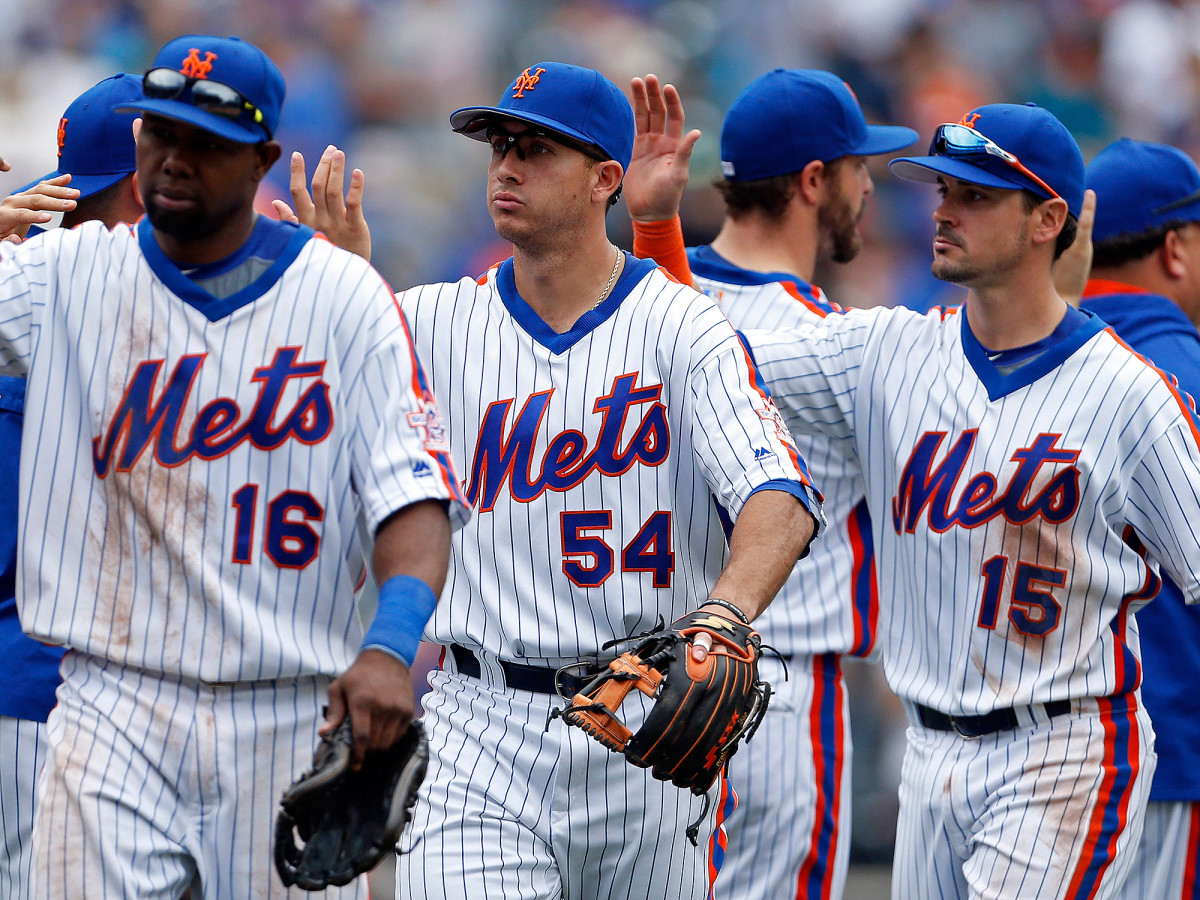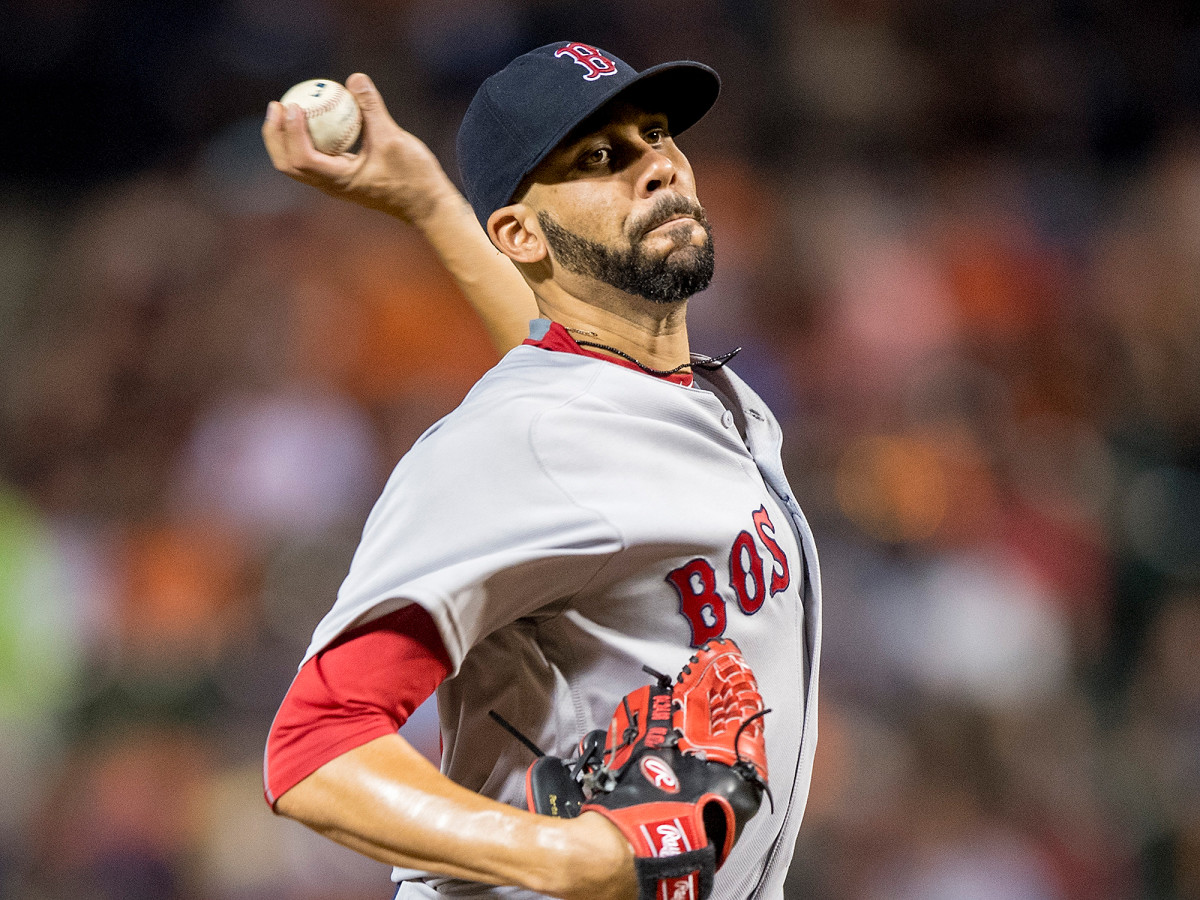The big question facing each MLB playoff team

With the Orioles, Blue Jays and Giants—the three teams who came into Sunday in control of their own destinies—taking care of business by winning their respective games, the 2016 postseason field is set. While there will be time to consider the individual wild-card and Division Series matchups over the next few days, what follows here is the big question facing each team as the postseason dawns—a question that we can only set up, as these teams will have to answer for themselves on the field.
All stats are through Saturday unless where indicated. Within their leagues, the teams are listed in order of their playoff seeding.
• Full 2016 MLB postseason schedule: Dates, TV channels and more
National League
Cubs: Can they overcome the hype to deliver the franchise's first championship in 108 years?
Ever since the Cubs were swept out of last year’s NLCS and went on an off-season spending spree to add Jason Heyward, Ben Zobrist and John Lackey, the expectation has been that the team would go further this year—at least to deliver the team’s first pennant since 1945, if not its first championship since 1908. Chicago's offense is the league’s most potent once you adjust for ballpark and is dangerous against both righties and lefties, with few places for opposing pitchers to hide. The rotation features last year's Cy Young winner, Jake Arrieta, and the league's top two finishers in ERA, Kyle Hendricks and Jon Lester. The bullpen has been shorn up by the late-season addition of Aroldis Chapman. This is a team without an obvious weakness, and while the Cubs have worn the pressure well for most of the regular season, they risk this season becoming just another one of the franchise’s many disappointments if they can't deliver.
In-depth look at why Cubs have all the ingredients to end World Series drought
Nationals: Can they overcome the losses of Stephen Strasburg and Wilson Ramos?
Though Washington coasted to the NL East title, the team that won 94 games during the regular season won’t be able to put forth nearly so strong a squad in the postseason. Catcher Wilson Ramos, who enjoyed a career year at the plate (.307/.354/.496 with 22 homers and a 123 OPS+), is done for the season due to a torn anterior cruciate ligament in his right knee, suffered last Monday. Without him, the Nationals’ regular lineup offers only four players with an OPS+ above 100: Daniel Murphy (157), Trea Turner (144), Bryce Harper (116) and Anthony Rendon (110). Worse, both Murphy and Harper are banged up: The former hasn't played since Sept. 20 due to a gluteal strain; the latter returned to the lineup this past weekend after missing four games due to a left thumb injury but hit just .210/.327/.321 in September and October.
Strasburg, who hasn’t pitched since Sept. 7 due to a flexor mass strain, is throwing off flat ground, meaning that it could be weeks before he's ready for game action. That will put a lot of pressure on Joe Ross, who missed 2 1/2 months due to a shoulder injury and hasn’t gone more than four innings in any of his three games back, to pick up the slack.
Dodgers: Can they handle lefthanded pitching?
The Dodgers finished the year seventh in the league in scoring (4.48 runs per game), and while they had the league's third-highest OPS against righties (.772, on .264/.331/.441 hitting), they had the circuit’s lowest mark against lefties by 41 points (.627, on .215/.292/.335 hitting) and went 22–24 in games started by southpaws. While Corey Seager held his own against same-siders, Adrian Gonzalez, Chase Utley and Joc Pederson did not. Manager Dave Roberts will have to mix and match with his lineup, hoping that platoon players such as Yasiel Puig, Carlos Ruiz, Kiké Hernandez and Charlie Culberson can provide some punch when lefties are on the hill.

Mets: Can they keep doing it with mirrors?
By now the litany is well-known: The defending NL champions will be without Matt Harvey, Jacob deGrom, Steven Matz, David Wright, Neil Walker and Wilmer Flores the rest of the way due to injuries. The team has shown its resilience, going an NL-best 27–13 since Aug. 19, but that had a whole lot to do with a soft schedule; just 11 of those games were against teams with records above .500. Can rookies Robert Gsellman and Seth Lugo continue to provide reasonable facsimiles of deGrom and Matz, as they did over the final weeks of the season? Can veteran returnees Kelly Johnson and rookie T.J. Rivera do the same to patch up the infield? Can the banged-up Asdrubal Cabrera and Yoenis Cespedes keep dragging themselves out there and remaining productive night after night? If they get past Madison Bumgarner in the wild-card game, we’ll find out.
Freakish jumps in home runs, strikeouts among MLB's nine macro trends in 2016
Giants: Is their bullpen up to the task?
After posting the league’s best record in the first half (57–33), the Giants very nearly posted its worst in the second half (30–42, one game better than the Phillies), and the bullpen was a big reason for that. The unit led the league with 32 blown saves and lost nine games in which it led in the ninth inning, including five in September and October; along the way, closer Santiago Casilla lost his job in favor of Sergio Romo, San Francisco’s closer during its 2012 championship run. To be fair, the unit had a much lower ERA and better peripherals in the second half (3.35 ERA, 3.62 FIP) than the first (3.94 ERA, 3.93 FIP), but its overall marks (3.66 ER, 3.78 FIP) are the highest of any NL playoff team, and given how important bullpens have become to postseason baseball, that's an unsettling thought.
American League
Rangers: Can they replicate their one-run magic?
The Rangers finished 28 games above .500 (95–67, the league’s best record) but outscored their opposition by only eight runs (765–757), outdoing their Pythagorean projection by 13 wins—the largest gap since 1905. They were able to do so because they posted a record .766 winning percentage in one-run games, going 36–11; they just edged the 2012 Orioles' .763 (29–9). That kind of success generally isn't sustainable, as it hinges on clutch performances that prove all too fleeting; the Rangers led the AL in close-and-late OPS (.798, on .273/.343/.455 hitting), a performance that led the league by 47 points and hints at regression ahead. Strong bullpens are usually a hallmark of such overachieving teams, but that’s not exactly the case here, as the Rangers’ 4.41 ERA and 4.41 FIP both ranked 14th in the league, though to be fair, the worst offenders in those statistical categories aren’t likely to have postseason roles.
• The best there ever was: Living with Vin Scully, the voice of the Dodgers
Indians: Can they overcome the rotation losses?
The Indians had the league’s second-best rotation in terms of ERA (4.09) and strikeout rate (8.5 per nine) with the best FIP (4.05). But Danny Salazar hasn’t pitched since Sept. 9 due to a forearm strain, Carlos Carrasco is done for the year due to a fracture in his hand and Corey Kluber left Monday's start after 60 pitches due to tightness in his groin. That's the team's three top starters in terms of ERA and FIP. It sounds as though Kluber will be ready to pitch Game 2 of the Division Series on Friday, but Salazar will be limited to bullpen duty (using his fastball and changeup but not curveball, to boot) leaving Trevor Bauer to start Game 1. Though he enjoyed a first-half breakout, Bauer has a 5.36 ERA and has given up 1.2 home runs per nine since the All-Star break. The back end of the rotation—Josh Tomlin (4.48 ERA, 4.91 FIP) and Mike Clevinger (5.26 ERA, 4.86 FIP)—doesn't inspire much confidence either. All of them will have to step up, as will a bullpen that's been revamped by the arrival of the dominant Andrew Miller.

Red Sox: Can David Price pitch like an ace?
With Steven Wright still out due to a shoulder injury and both Eduardo Rodriguez and Clay Buchholz coming off uneven seasons, the Sox will depend heavily on the one-two punch of Price and Rick Porcello. The latter pitched his way into the Cy Young conversation, but the former—who won the award in 2012 and finished second in the voting last year—did not. Though he led the AL in innings (230) and ranked fourth in strikeouts (228), Price finished the season with his highest ERA (3.99) and FIP (3.60) since 2009, mainly due to his struggles with keeping the ball in the park (1.2 homers per nine). What's more, he struggled last October as well and now owns a 5.12 ERA in the postseason. He'll have to do better than that if the Red Sox are to stick around for very long.
• The Exit Interview: David Ortiz on steroids, his final season and more
Blue Jays: Can they shake out of their late-season funk?
The Jays are the only team among this year's postseason field to post a sub-.500 record in September and October, going 13–16 in that span, and split their last 52 games dating back to Aug. 5. The good news is that studies (including one of my own) have shown that there's little correlation between September performance and October success—at the team level. That doesn't wash away whatever woes individual Jays have had lately, including the late-season funks of Russell Martin (.145/308/.301 in September and October coming into Sunday), Michael Saunders (.154/.236/231) and Melvin Upton (.163/288/.256). Likewise on the pitching side, particularly the bullpen (4.80 ERA, 1.6 homers per nine), where Jason Grilli and Joe Biagini have been pummeled lately and stopper Joaquin Benoit suffered a strained calf during a bench-clearing brawl against the Yankees.
Orioles: Will power play?
The Orioles hit a major league high 253 home runs, with Mark Trumbo’s 47 leading the AL and five other players hitting at least 20: Chris Davis (38), Manny Machado (37), Adam Jones (29), Jonathan Schoop (25) and Pedro Alvarez (22). For the third straight year, they scored the majors’ highest percentage of runs via homers (51.7%). Thanks in part to the Royals’ recent success, there tends to be a prejudice against postseason teams that rely so heavily on the home run, but as Grantland’s Ben Lindbergh showed two years ago, during the wild-card era, such teams have seen less falloff in scoring during the postseason than less homer-reliant teams. That said, Schoop, Jones and even Machado have struggled over the past month, and the Orioles have some significant question marks in their rotation as well.
